
Storytime STEM.
- Subject:
- Applied Science
- Architecture and Design
- Art History
- Arts and Humanities
- Engineering
- Material Type:
- Activity/Lab
- Date Added:
- 03/06/2019

Storytime STEM.
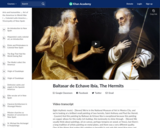
Baltasar de Echave Ibía, The Hermits, Saint Paul and Saint Anthony, c. 1620, oil on copper, 51.5 x 37.5 cm (Museo Nacional de Arte [MUNAL], Mexico City) Speakers: Dr. Lauren Kilroy-Ewbank and Dr. Steven Zucker. Created by Beth Harris and Steven Zucker.

Dame Barbara Hepworth, Pelagos, 1946, elm and string on oak base, 43 x 46 x 38.5 cm (Tate Britain). Pelagos is the word for "sea" in Greek. speakers: Dr. Beth Harris and Dr. Steven Zucker. Created by Beth Harris and Steven Zucker.

English sculptor Barbara Hepworth (1903-1975) was one of the most outstanding female artists of the 20th century. Her smooth, massive sculptures invite their audiences to engage with and even touch them, and they stand as icons of the modern movement. But although a figure of international standing, Hepworth never achieved the same degree of recognition in her lifetime as male contemporaries Henry Moore or Ben Nicholson (her husband of nearly 20 years). Travel to the coastal English town of St Ives, where Hepworth lived and worked until her death in 1975, where many of her sculptures were created and where they continue to stand in the environment they were intended for. If you could see one, how would you interact with a Hepworth sculpture? Created by Tate.
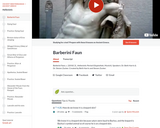
Barberini Faun, c. 220 B.C.E., Hellenistic Period (Glyptothek, Munich). Speakers: Dr. Beth Harris & Dr. Steven Zucker. Created by Beth Harris and Steven Zucker.
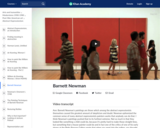
Set aside the everyday and enter the profound, even spiritual space of Barnett Newman's paintings. Created by The Museum of Modern Art.

This art history video looks at "The Painting Techniques of Barnett Newman: Vir Heroicus Sublimis" Abstract Expressionist New York, The Museum of Modern Art, October 3, 2--April 11, 2011. Filmed by Plowshares Media; Music by Chris Parrello, Ian Young, Kevin Thomas, Ziv Ravitz.

This art history video discussion looks at Johannes Vermeer's "Young Woman with a Water Pitcher", oil on canvas, c. 1662 (Metropolitan Museum of Art).

This resource was created by Kelly Schrunk, in collaboration with Dawn DeTurk, Hannah Blomstedt, and Julie Albrecht, as part of ESU2's Integrating the Arts project. This project is a four year initiative focused on integrating arts into the core curriculum through teacher education, practice, and coaching.

The Baroque, Rococo, and Neoclassical styles dominated the art of Western Europe between 1600 and 1800. Baroque artists like Caravaggio and Peter Paul Rubens sought to reinvigorate Catholic art with art and architecture that emphasized drama and movement. Rococo artists like Fragonard celebrated the leisure activities of the upper class, as the center of style and culture moved to Paris from Rome. Neoclassical art and architecture looked back to the classical era for inspiration, producing Greek-style columned buildings such as the US Capitol Building. A video from the Utah System of Higher Education (with special thanks to Dr. Nancy Ross). Created by Nancy Ross.

A series of Poweroint presentations dealing with guidelines on how to acquire research and organisational skills for first-year undergraduate level essays and presentations in the History of Art
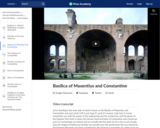
Basilica of Maxentius and Constantine (Basilica Nova), Roman Forum, c. 306-312. Speakers: Dr. Darius Arya and Dr. Beth Harris. Created by Beth Harris and Steven Zucker.
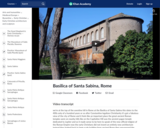
Basilica of Santa Sabina, 422-432, Rome Speakers: Dr. Beth Harris and Dr. Steven Zucker. Created by Beth Harris and Steven Zucker.
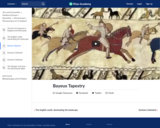
Animation by David Newton, Sound Design by Marc Sylvan. Copyright Potion Pictures Limited. The title "Bayeux Tapestry" (1066-82) is a bit of a misnomer—the textile is embroidered wool on linen, and not actually a woven tapestry. The wool was dyed using the plants Woad, Madder, and Rocket. The linen canvas measures 20 inches in height by 230 feet in length (50 cm x 70 m), and supports the narrative embroidery that tells of the Norman invasion of England—though very much from the Norman perspective. The tapestry depicts Duke William of Normandy's conquest of Harold Godwinson—England's new and ill-fated King. The conquest is portrayed as fully justified, and Harold is represented as an opportunist who broke his oaths to Edward the Confessor, former King of England, and to William himself. Although first known as William the "Bastard" (he was the illegitimate son of Robert the Magnificent and Herleva of Falaise), a name change accompanied his military success: he became known as William the “Conqueror." The Norman conquest is a key turning point in Western history, and the English language still reflects this dominance of French over Saxon culture.
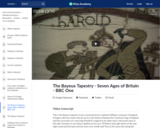
The Bayeux Tapestry. The BBC's David Dimbleby describes the historical significance of the Bayeux Tapestry for his forthcoming BBC One Series, Seven Ages of Britain.
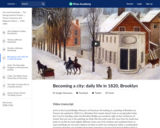
Francis Guy, Winter Scene in Brooklyn, 1820, oil on canvas, 147.3 x 260.2 cm (Crystal Bridges Museum of American Art). Speakers: Dr. Margaret C. Conrads, Director of Curatorial Affairs, Crystal Bridges Museum of American Art, and Dr. Beth Harris, Smarthistory. Created by Beth Harris and Steven Zucker. Find learning related resources here: https://smarthistory.org/seeing-america-2/

The awesome beauty of the hole dug for Pennsylvania Station. George Bellows, Pennsylvania Station Excavation, c. 1907–08, oil on canvas, 79.2 x 97.1 cm (Brooklyn Museum), a Seeing America video Speakers: Dr. Margarita Karasoulas, Assistant Curator, American Art, Brooklyn Museum and Dr. Steven Zucker. Created by Smarthistory. Find learning related resources here: https://smarthistory.org/seeing-america-2/

From the ancient discovery of the camera obscura to the 18th century mechanical devices used to create silhouettes such as the physionotrace, this initial chapter explores the inventions and inventors that preceded photography. It recreates the experiments of Johann Schulze who proved the light sensitivity of certain silver salts and Thomas Wedgwood’s early attempts to make photographic images. These early pioneers contributed to the discovery of photography in 1839. This project is made possible by a grant from the U.S. Institute of Museum and Library Services, grant number MA-10-13-0194.
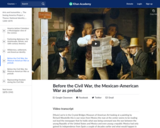
Before the Civil War, the Mexican-American War as prelude. Richard Caton Woodville, War News from Mexico, 1848, oil on canvas, 68.6 × 63.5 cm (Crystal Bridges Museum of American Art, Bentonville, Arkansas). Speakers: Dr. Mindy Besaw, curator, Crystal Bridges Museum of American Art, and Dr. Steven Zucker. Created by Beth Harris and Steven Zucker. Find learning related resources here: https://smarthistory.org/seeing-america-2/

When Banksy shredded his artwork the moment after it sold at auction, he left many questions unanswered. What are we to make of the stunt?